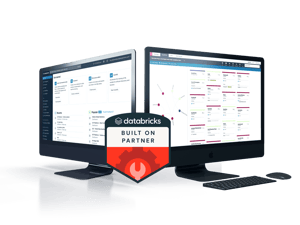Organizing Brownfield Data Across Multiple Plants.

Kobai + Databricks
Semantic Intelligence
Unlock context, relationships, and trustworthy AI—without leaving your lakehouse.
Data without Meaning
- Enterprises invest heavily in unified data platforms (lakehouses, Delta tables, data engineering pipelines), but often still can’t answer “why” things happen — only “what” happens.
- Tables, joins, and pipelines don’t encode business logic, domain meaning, or relationships across domains.
- Analysts, domain experts, and downstream AI applications struggle to find and join data across silos without redoing work every time.
Semantic Intelligence
What Is a Knowledge Graph — And Why It Matters?
A knowledge graph is a network of entities and relationships — i.e. “Machine A is part of Plant B”, “Product X depends on Supplier Y”, or “Project P references Dataset D”. It adds context and semantic meaning on top of raw tables.
Key Advantages:
- Models many-to-many relationships naturally (beyond rigid relational joins)
- Enables multi-hop reasoning and exploration (e.g. “Which suppliers influence quality across multiple plants?”)
- Supports inference / discovery of implicit relationships
- Keeps semantic definitions separated from physical data, enabling reuse and evolution
With Databricks:
- A semantic layer can sit on top of your Delta tables, translating graph queries into SQL or Spark operations.
- Databricks’ “semantic layer” concept describes this bridge between technical models and business-friendly views. Learn more on Databricks.
- In life sciences, Databricks has already demonstrated constructing knowledge graphs over Delta Lake to combine domain data, ontologies, and analytics. Learn more on Databricks.
Kobai + Databricks
Kobai's core principle is to act as a semantic and reasoning layer that sits on top of the Databricks Lakehouse, not as a separate data silo. All compute, governance, and data remain inside Databricks.
The Semantic Layer on the Lakehouse
Kobai integrates seamlessly to leverage your existing Databricks investments for performance and trust.
Semantic Modeling
Domain experts visually or with code-assist define entities, relationships, constraints, and business logic. They map Unity Catalog tables/columns to semantic classes with Kobai Precursor
Consumption & AI
Provides APIs, conversational assistants, BI integrations, and notebooks. It supports hybrid graph + vector reasoningfor advanced RAG/LLM use cases, ensuring every result is traceable back to source data and semantic rules using Kobai Tower & Episteme.
Graph / Semantic Engine
Builds a semantic index and graph model that references the underlying data. It translates user-issued graph queries (traversals, pattern matching) into optimized SQL/Spark queries, pushing the compute down to Databricks with Kobai Saturn
Data Foundation
Houses all enterprise data (Delta Lake, structured/unstructured) and uses Unity Catalog for governance, access control, and lineage.
Query Pushdown & Performance
Kobai Saturn's engine is built for efficiency on the Lakehouse:
-
Translation: All complex graph operations are automatically translated into highly optimized SQL/Spark queries and executed on Databricks compute resources.
-
Zero Data Movement: Semantic queries execute precisely where the data resides, eliminating movement latency and data sprawl.
-
Scalability: For very large graphs, Kobai utilizes advanced techniques like caching, indexing, batching, and dynamic query optimization to scale performance within your Databricks environment.
Governance & Security Inheritance
Kobai's semantic layer inherits the security model of the Databricks Lakehouse:
-
Unity Catalog Extension: Permissions and access controls set in Unity Catalog are naturally extended and enforced for all graph traversals and semantic queries.
-
Audit & Lineage: Semantic models and graph schemas are versioned and auditable. This preserves complete lineage, meaning every answer or AI inference can be traced directly back to the source data, relationships, and applied semantic rules.
Customer Scenarios & Use Cases
Life Sciences / Pharma
Integrate clinical trial protocols, molecular data, regulatory knowledge, and outcomes into one reasoning graph.Industrial / Manufacturing
Connect sensor data, maintenance logs, BOMs, suppliers, and operational constraints into a semantic model for predictive maintenance.Supply Chain & Logistics
Reason across suppliers, shipments, inventory, quality issues, and regulatory constraints.
Energy / Utilities
Model assets, grid topologies, failure modes, telemetry, and operational policies in context.
Bring science, quality, and compliance together.
Exponentially Better Together
Leverage the speed and scale of Databricks, now powered by the native semantic layer with Kobai. Empower your teams to model knowledge, drive graph intelligence, and turn data into durable enterprise value.


